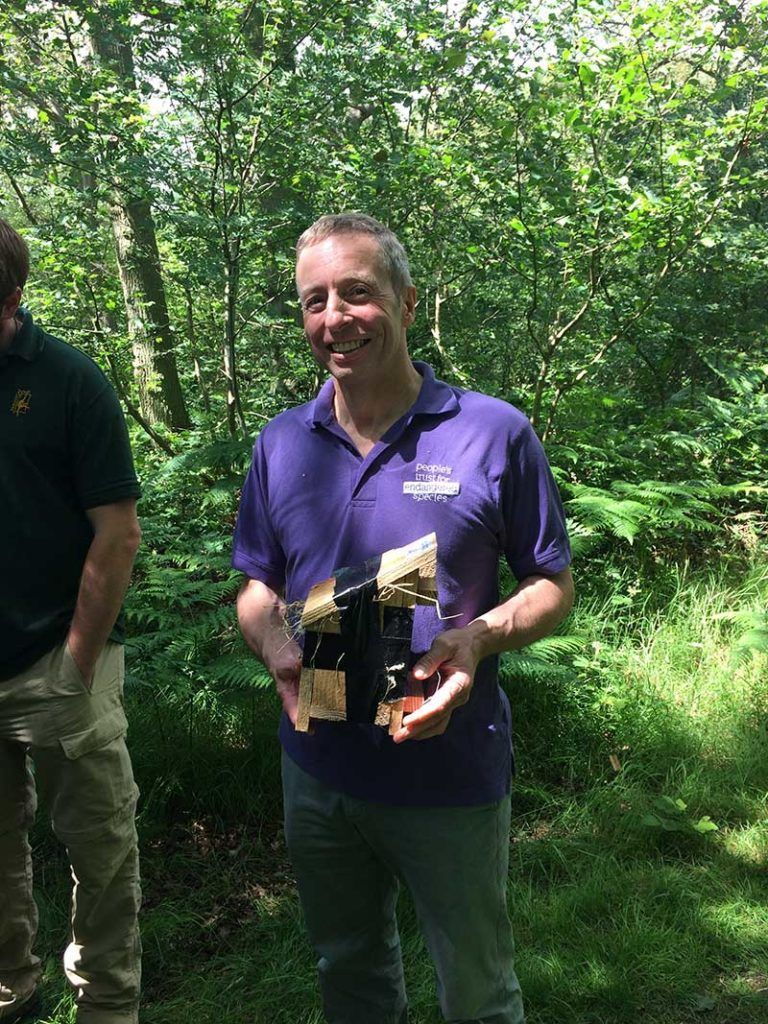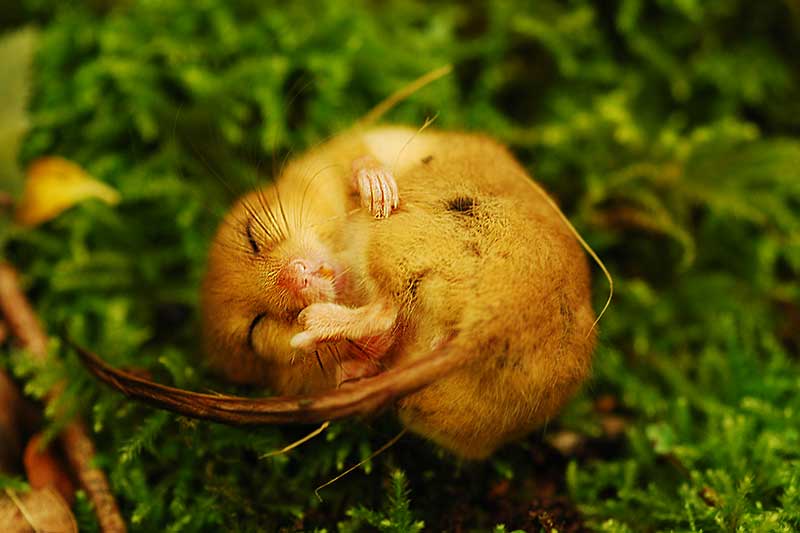My job in a nutshell
I have often wondered, if I was ever stopped by the police and asked my occupation, and I replied, ‘I’m a dormouse officer’, whether they would see the funny side. I hope they would, because this job is fun, exciting, interesting, challenging, stressful, and very rewarding. But what do I actually do?
In a nutshell I manage the conservation of the hazel dormouse in England and Wales. And to do that is very rewarding because everyone loves hazel dormice. They are incredibly cute, with sandy fur, a furry tail and big black eyes while also appearing very vulnerable, being small, living within the tree and shrub canopy and hibernating over winter. It’s also very challenging, this is a species undergoing a dramatic decline in the UK for reasons we have known about for 30 years, but for reasons that are hard to change.
First, it is a shrub or scrub species and this a rare type of habitat, shaded out as trees get bigger. Second, woodlands have become more isolated as larger, more industrial farms have less use for the hedgerows which are the connective link across the countryside. Finally, dormouse survival is affected by climate change, mild winters increases the chance they will die in hibernation and wet springs means they produce fewer young.
It helps that they’re cute
“This is a species undergoing a dramatic decline in the UK for reasons we have known about for 30 years, but for reasons that are hard to change.”
So what can we do about this? I spend a lot of time advising on woodland management. Recently, I talked to Surrey Wildlife Trust about how they could make all their nature reserves dormouse friendly; something they are keen to do. I also teach land managers and ecological consultants about dormice and the places in which they live and how we might improve things for them. Usually when you take a dormouse out of a nest box to show people this engaging species, they are immediately smitten and very keen to help and get involved.
The NDMP
PTES also manage the National Dormouse Monitoring Programme which is predominantly done by volunteers. So to help them count our dormice, we have supplied over 20,000 dormouse nest boxes made at HMP Humber over the last 10 years. I also talk to voluntary groups (about dormice of course) and organise National Dormouse Conferences to share knowledge and information on this charming species.
What do I love most?
What do I love most about my job? The projects; that can be as big and bold and as creative as it is possible to conceive and may get off the ground with dormice as the species they aim to benefit. The people; who are as enigmatic, as charming and as characterful as the species they want to help conserve. And dormice, of course. To most people it is love at first sight, to me it is still love at the thousandth sighting. To help the dormouse survive we are supporting hundreds of other, lesser species; to let it go extinct, we do so at our peril.
Written by Ian White, Dormouse Officer for PTES
Image credits clockwise John Webley, Frazer Waller, Lorna Griffiths
2020 marks the 30th anniversary of the National Dormouse Monitoring Programme. Along with our partners at Natural England, PTES collate records from over 400 dormouse monitoring sites across the UK. The NDMP now has hundreds of trained monitors regularly checking dormouse boxes throughout the year. We’re extremely grateful to all our dormouse monitors for their great contribution to dormouse conservation. If you’d like to donate to our work to help us continue conserving this vulnerable species, please donate here. Thank you.




